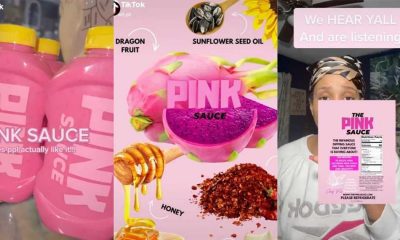Entertainment
Top 8 AI Music Generator Options for Video Editors and Marketers
Published
2 years agoon
By
Skylar Lee
Video is the preferred content type by most marketers. After all, most consumers want to learn about brands through video. That’s why brands should consider investing in video to attract more customers. But when creating videos, video editors or video marketers face one obstacle: finding the right audio for their content. It can be time-consuming to find the best one to fit the mood or one that’s free to use commercially. Luckily, AI is here to save the day. Here are eight AI music generator options to try!
1. Soundraw
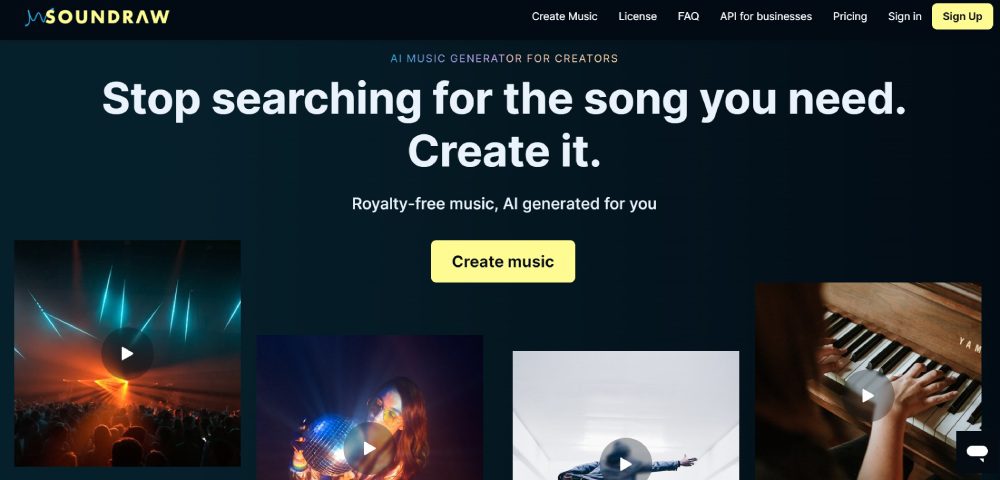
Are you pressed for time and want an AI to make the music for your video? Soundraw is our first music generator selection. The AI music generator lets you choose the mood, genre, and length. After that, let AI handle the music editing while you work on editing a compelling video.
Licensing:
You can use the AI-generated music on:
- YouTube
- Corporate videos
- Web ads
- TV & movies
- Live broadcasting
- Vlog
- Vtube
However, you can’t use the AI-generated track if the video supports the music, as this is considered an audio creation.
Pricing:
- Free
- Personal Plan – $19.99/mo
2. Soundful
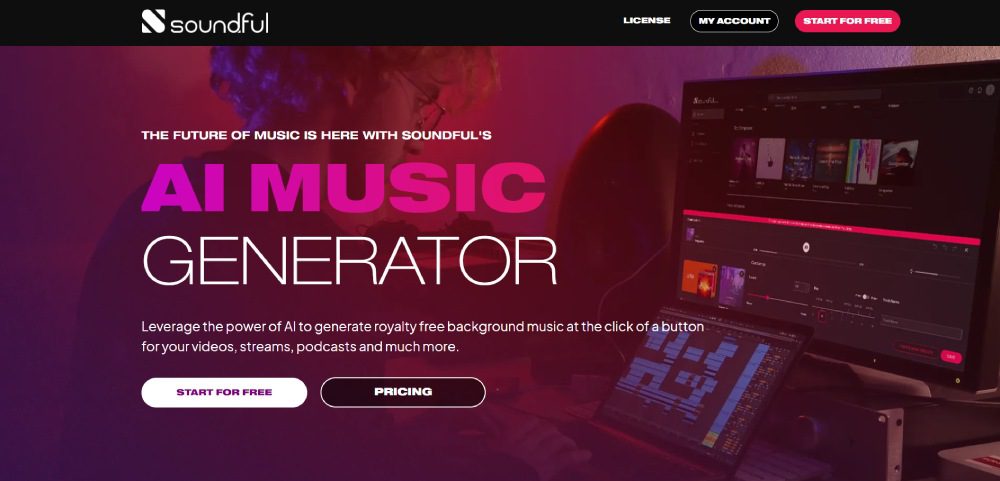
If you have experience creating music for your video marketing strategy, Soundful is one of the best options. You can create your music with AI’s assistance. You do this by choosing a genre, editing the BPM (speed), and changing the keys. However, if you don’t know how to do this, you can select a template, edit if necessary, and download it.
Licensing:
Licensing depends on your preferred plan.
On the Standard plan, the audio should be used for personal projects only. However, if you need to use audio for commercial purposes, social media videos, and YouTube, you can use it with the Content Creator and Music Creator Plus plans.
Pricing:
- Standard – Free
- Content Creator – $59.99/yr
- Music Creator Plus – $9.99/mo
- Enterprise – Custom
3. Boomy
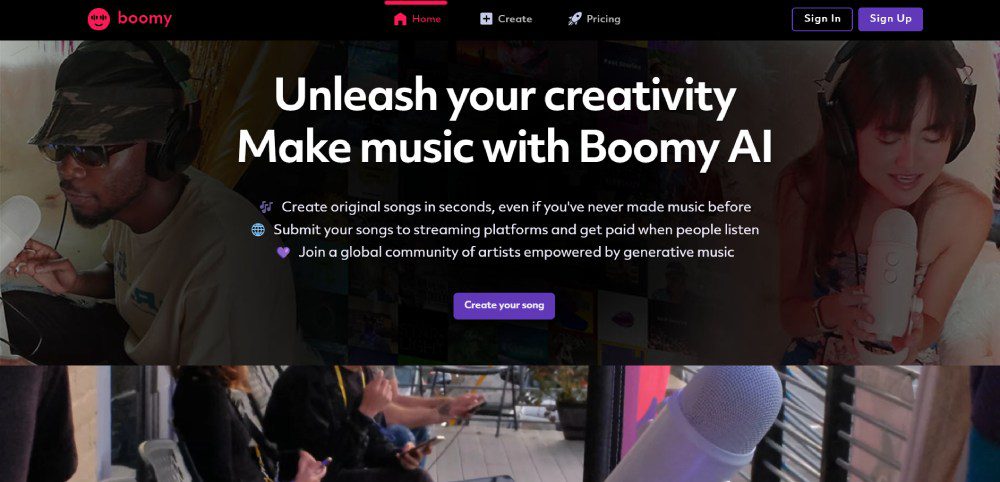
Boomy is another AI music generator to consider if you want original songs for your videos. The process of getting music starts with choosing a music style, such as Lo-Fi or Electronic Dance. After selecting a style, you can play a preview of recommended songs based on your preferences. The AI will generate music when you finally decide on your chosen song. Then, you can edit it before downloading the song!
Licensing:
On the Free plan, you can’t use the AI-generated audio commercially. Meanwhile, the Creator plan allows the use of audio non-commercially on social media and live-streaming. Finally, the Pro plan allows the non-commercial use of video, live-streaming, and own songs. Plus, they allow commercial use in podcasts and social media (videos and ads).
Pricing:
- Free
- Creator – $14.99/mo
- Pro – $39.99/mo
4. Loudly
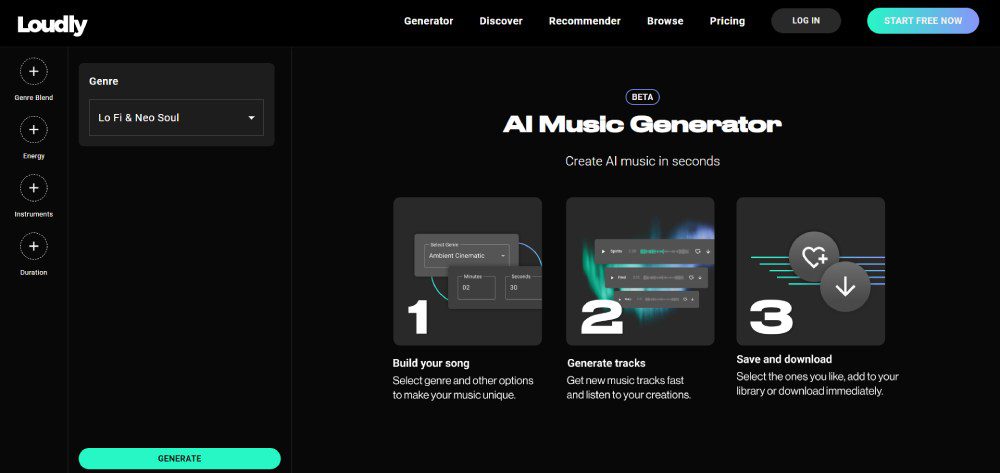
Although Loudly originally provided 100% royalty-free music for your videos, the music platform also offers AI music generation. It takes three easy steps to get songs or audio.
The first step is to select the genre and customize it with a genre blend, energy, instrumentation, and duration. After generating that, their AI will work on creating your song. Finally, download it and use that for your content!
Licensing:
Like others on this list, licensing depends on your subscription. If you’re using it for free, AI-generated music can be used on social media. However, commercial use starts with the Personal Plan. Plus, you get extended license coverage on the Pro plan and customized licensing terms on the Enterprise subscription.
Pricing: Free (for AI-generated music)
5. Beatoven.AI
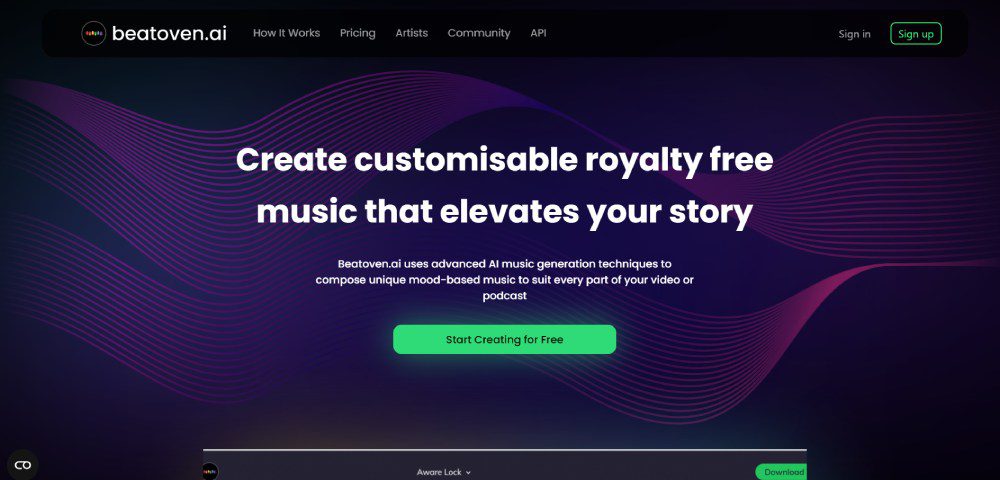
Beatoven.AI is ideal for video creators that publish more than 5+ videos in a month. Their AI can generate various songs for you. The process of creating AI music is similar to others on this list. But Beatoven.AI allows you to personalize the audio by cutting the piece or music before AI composes it. Once done, let AI handle the hard work while you edit videos.
Licensing:
According to Beatoven.ai, users are given a perpetual license, but the copyright belongs to the company.
Pricing:
- Free
- Pro – starts at ₹159/mo (~$1.95/mo) for 15 minutes of audio
6. Beatbot.fm (Splash Pro)
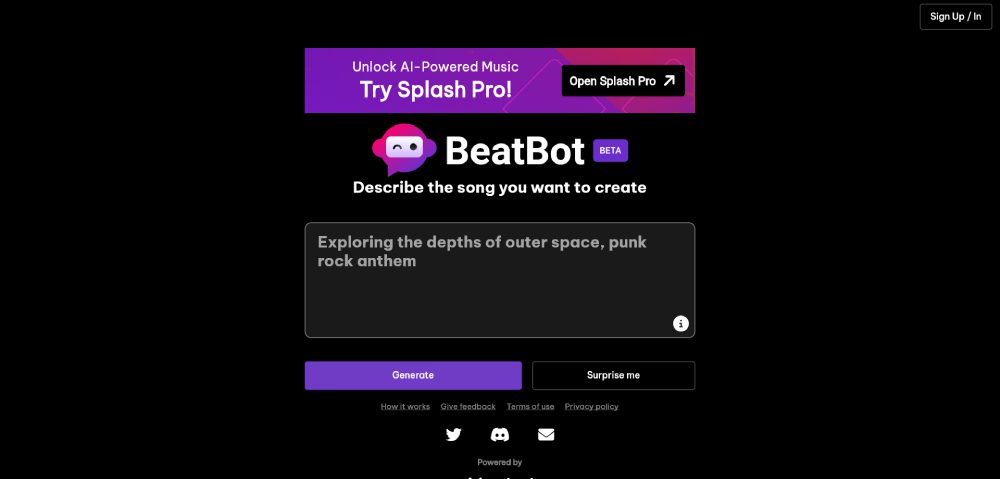
Beatbot.fm is an AI music generator allowing you to submit a prompt instead of choosing genres or customizing your track. After that, the AI will generate a song. Plus, it will even provide lyrics! Unlike other options, you can’t edit the track. However, you can subscribe to Splash Pro for a longer song, a commercial license, and editable lyrics.
Licensing:
They grant an unlimited commercial license when subscribed to Splash Pro or using Beatbot. You can use it commercially and non-commercial. Also, you don’t have to worry about copyright claims when adding the AI-generated track to your social media videos. However, you cannot copyright the music, which could hinder other users from using their songs.
Pricing:
- Free
- Starter – $10/mo
- Max – $49/mo
- Enterprise – Contact Sales
7. Mubert
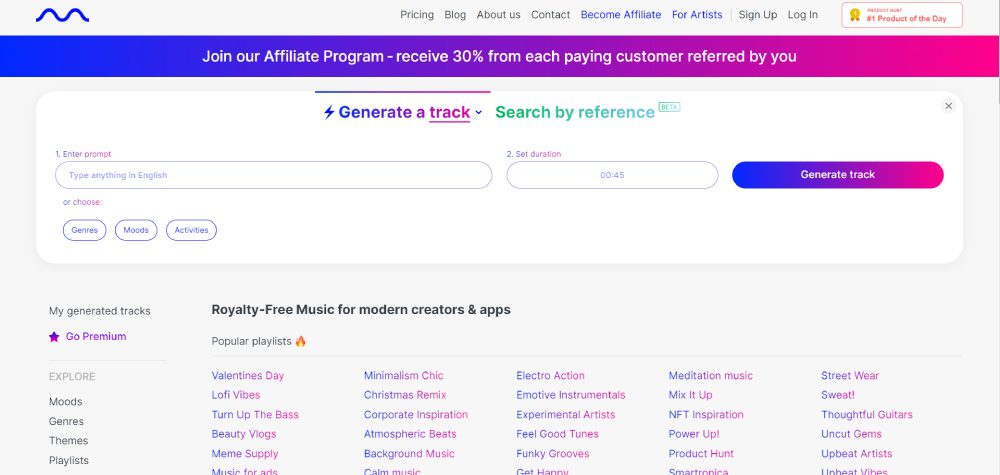
You can use Mubert by submitting a prompt, setting a duration, and selecting genres, moods, or activities. Or, if that’s too much, you can choose from a template you can edit. However, a third option makes Mubert one of the most popular AI music generators. You can link a YouTube video to tell the AI what music you want.
Licensing:
If you’re on the free plan, you can use the track for personal use, but you need to credit Mubert. However, no attribution is necessary on their paid plans.
Pricing:
Users can pay for songs or tracks in two ways.
Subscription
- Ambassador – Free
- Creator – $14/mo
- Pro – $39/mo
- Business $199/mo
Single Track Purchase
- Standard – $19
- Online ads – $99
- All media – $149
- In-app music – $199
8. AIVA
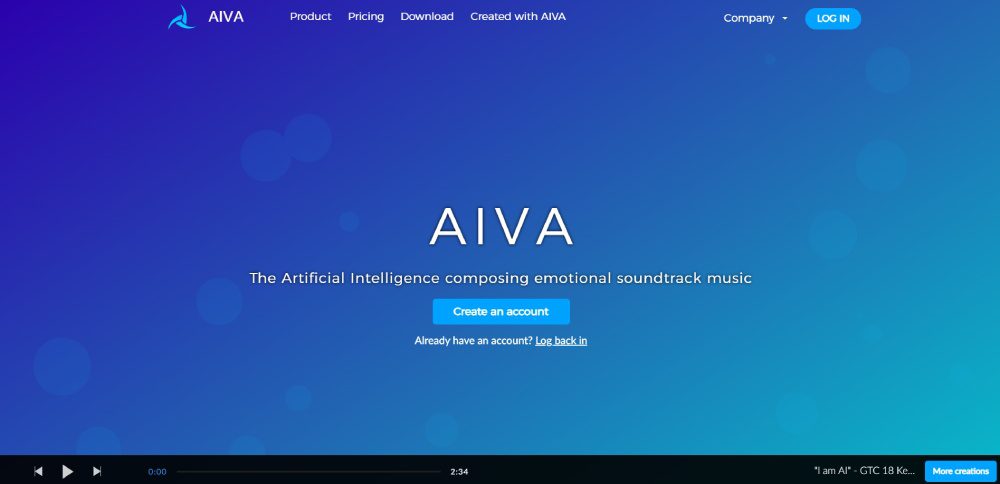
Our final AI music generator is AIVA. You don’t need to be a music professional or audio engineer to use AIVA. You can choose a preset style and customize parameters, such as key signature, time signature, and more. However, you can leave it on Auto. After that, you can edit the audio or download it immediately for videos.
Licensing:
Free to use for personal use. However, if you want to use it for commercial purposes, you need to subscribe to their plans.
Pricing:
- Free
- Standard Monthly – €15/mo
- Pro Monthly – €49/mo
- Enterprise – Contact sales
You may like
Entertainment
History of the NBA: The Success Behind the Big League
Published
1 day agoon
July 10, 2025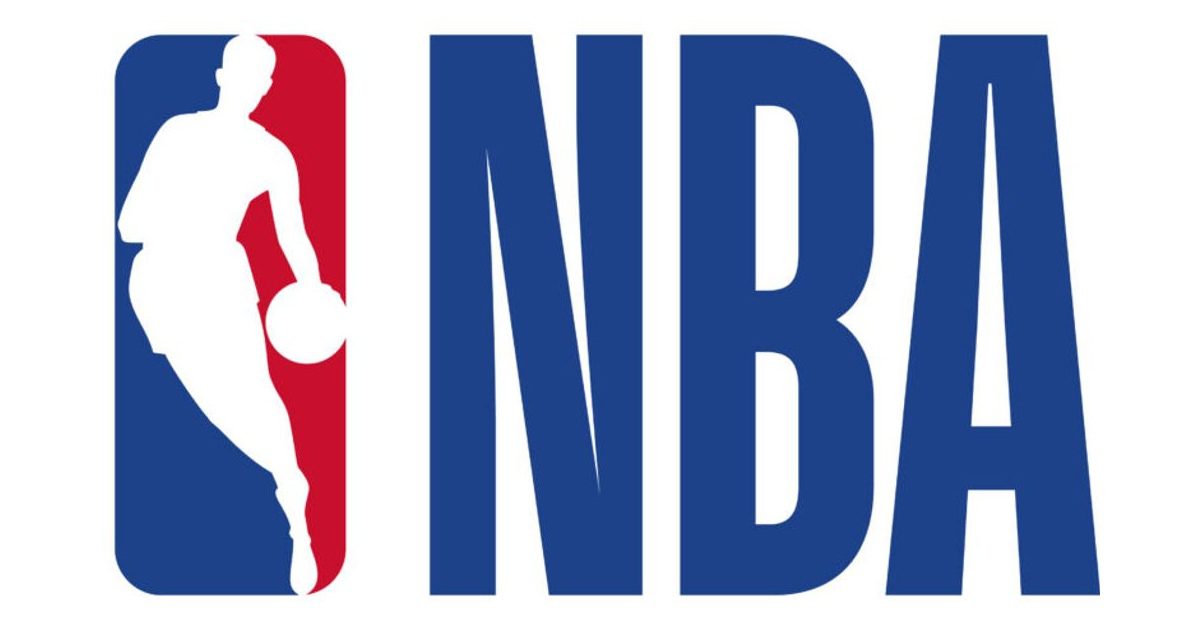
A household name known across the globe, the NBA (National Basketball Association) needs no introduction. Everyone is familiar with the logo, the commercials, the players, and the teams. This is all thanks to its establishment in 1946, which has grown into a lucrative and prosperous business, loved by many basketball fanatics. But how exactly did the NBA achieve this global success? Find out here.
History of the NBA: How it Started
Deemed the most significant professional sports league in the U.S. and Canada, the NBA is a favorite basketball league among most men worldwide. It’s a professional basketball league in North America, with 29 teams in the United States and one team in Canada. Overall, the NBA has 30 of the best basketball teams with the best talent in the world.
The NBA was founded on June 6, 1946, in New York City, with Maurice Podoloff as its first president and commissioner. Its original name was the BAA, which stands for Basketball Association of America. It then merged with its competitor, which is another basketball league called the National Basketball League (NBL). And this is when the league changed its name to the National Basketball Association (NBA).
The NBA’s basketball season runs from October to April, with the playoffs extending into June. Each of the 30 teams plays 82 regular-season games, and the league now includes a midseason tournament called the NBA Cup, held in November and December, which adds competitive flair to the early calendar.
As of 2025, NBA players remain among the highest-paid athletes in the world based on average annual salary. For example, Stephen Curry leads the league with a salary of $59.6 million, followed closely by stars such as Joel Embiid, Nikola Jokić, and Kevin Durant, all of whom earn over $50 million per season. The league’s growing media deals and global reach continue to drive player earnings upward.
These are the NBA teams of the 2024–25 Season:
- Atlanta Hawks
- Boston Celtics
- Brooklyn Nets
- Charlotte Hornets
- Chicago Bulls
- Cleveland Cavaliers
- Dallas Mavericks
- Denver Nuggets
- Detroit Pistons
- Golden State Warriors
- Houston Rockets
- Indiana Pacers
- Los Angeles Clippers
- Los Angeles Lakers
- Memphis Grizzlies
- Miami Heat
- Milwaukee Bucks
- Minnesota Timberwolves
- New Orleans Pelicans
- New York Knicks
- Oklahoma City Thunder
- Orlando Magic
- Philadelphia 76ers
- Phoenix Suns
- Portland Trail Blazers
- Sacramento Kings
- San Antonio Spurs
- Toronto Raptors
- Utah Jazz
- Washington Wizards
The Reason for the NBA’s Success
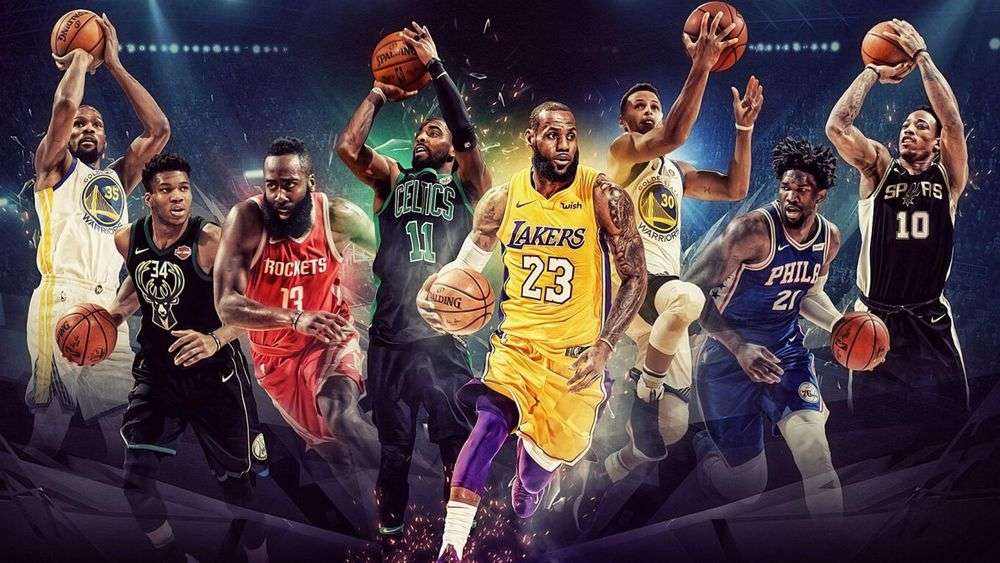
The NBA is the most successful sports league globally, amassing billions in revenue. And this is due to how innovative this professional basketball league is. For decades, it had to catch up to its competing sports leagues, such as football and baseball.
Moreover, the NBA is also the first league to transform its all-star game into a three-day weekend packed with fun events with impressive turnouts. The NBA is also responsible for turning NBA players into global stars due to worldwide broadcasting. The NBA dominated the other top sports league in America, Major League Baseball.
Since it’s not a public company, the league doesn’t disclose detailed public financial reports. But one Forbes report that shows valuations of all 30 NBA teams, the league’s revenue in the 2018 to 2019 season reached around $8.6 billion.
Each one of the teams is valued at $1 billion, and one team, on average, is worth $2.2 billion. This is about 14 percent higher than the 2017 to 2018 season.
It’s no surprise that NBA players are the best-paid athletes in the world. Plus, it certainly also doesn’t shock everyone why the NBA’s revenue could reach up to billions. And that’s because the league amasses its revenue from several streams.
Revenue from TV
While many would like to see the action live on a court, many people also prefer to watch games on TV. And this is why the NBA’s television revenue is a major part of its success. The league has garnered several television contracts that continue to increase over the years.
During the 2016 to 2017 season, ESPN and TNT had to re-up their contracts to approximately $24 billion. It was a nine-year deal that earned the NBA around $2.6 billion per year.
The NBA also had to ramp up TV advertisements, which is also one of the reasons why the league gained popularity over time.
Revenue from merch
Another significant contributor to NBA’s revenue is merchandise, which accounts for around $1 billion annually. During the 2017 to 2018 season, the teams wore advertisements on their jerseys for the first time in the history of NBA. This is called the Jersey Patch revenue, which lets teams take home $9.3 million annually.
Another revenue from merch is sponsorships. The NBA also gets sponsorship from major brands like Nike and Adidas, with contracts amounting to billions.
Revenue from tickets
The ticket sales aren’t the NBA’s primary source of revenue. However, it still stacks up to incredible sales every season. For instance, tickets are sold at around $70 each. Multiply that by 15,000 to 20,000 attendees. You do the math.
Worst draft in the history of NBA

According to experts, the worst draft in the history of the NBA was the 2000 NBA draft on June 28, 2000. It was the only draft in which a college senior was considered the top overall selection.
The only top pic was Kenyon Martin, first-rounder Jamaal Magloire, and second-rounder Michael Redd.
Most high-performing teams
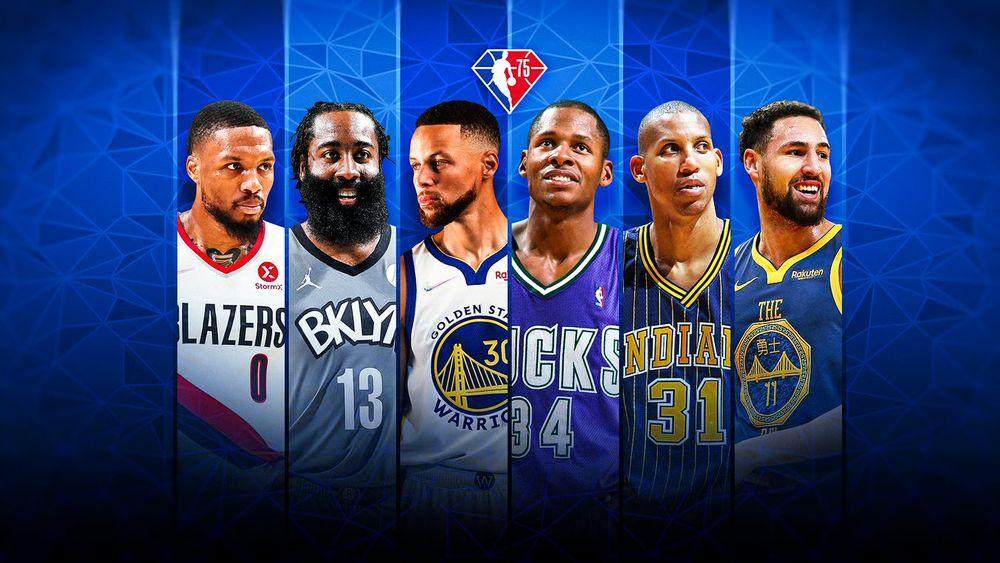
The top NBA players have been gaining stardom globally, with fanatics giving their full support in every game. These NBA legends list continues to grow, with names in each new generation.
Some of the greatest NBA players of all time (2025 edition)
- Michael Jordan
- LeBron James
- Kareem Abdul-Jabbar
- Bill Russell
- Magic Johnson
- Wilt Chamberlain
- Larry Bird
- Kobe Bryant
- Tim Duncan
- Shaquille O’Neal
- Hakeem Olajuwon
- Oscar Robertson
- Kevin Durant
- Stephen Curry
- Dirk Nowitzki
- Charles Barkley
- Karl Malone
- John Stockton
- David Robinson
- Julius Erving
- Elgin Baylor
- Steve Nash
- Allen Iverson
- Kevin Garnett
- Rick Barry
- John Havlicek
Modern legends rising into historical greatness
- Giannis Antetokounmpo
- Nikola Jokic
- Shai Gilgeous-Alexander
- Jayson Tatum
- Luka Doncic
- Victor Wembanyama
It’s still tricky to crown a single “best” team in NBA history—success can be measured by championships, consistency, or win-loss records. But here’s how things stand now:
- Boston Celtics remain the winningest franchise in NBA history, with 3,574 total wins.
- San Antonio Spurs still hold the highest all-time win percentage over the past 25 years, winning 62.5% of their games.
- Minnesota Timberwolves continue to rank among the lowest in win percentage, with a historical record of 1,088 wins to 1,581 losses, translating to a 40.8% win rate.
For current standings and team performance, you can visit the NBA’s official standings page.
Conclusion
The sports league juggernaut isn’t slowing down anytime soon. As long as basketball fans are still raving about their favorite teams and players, it’s no surprise this basketball league will enjoy revenue increases in the coming years.
For other stories, read more here at Owner’s Mag!
Entertainment
Taylor Swift’s Fortune: The Billionaire Behind The Eras Tour
Published
4 weeks agoon
June 17, 2025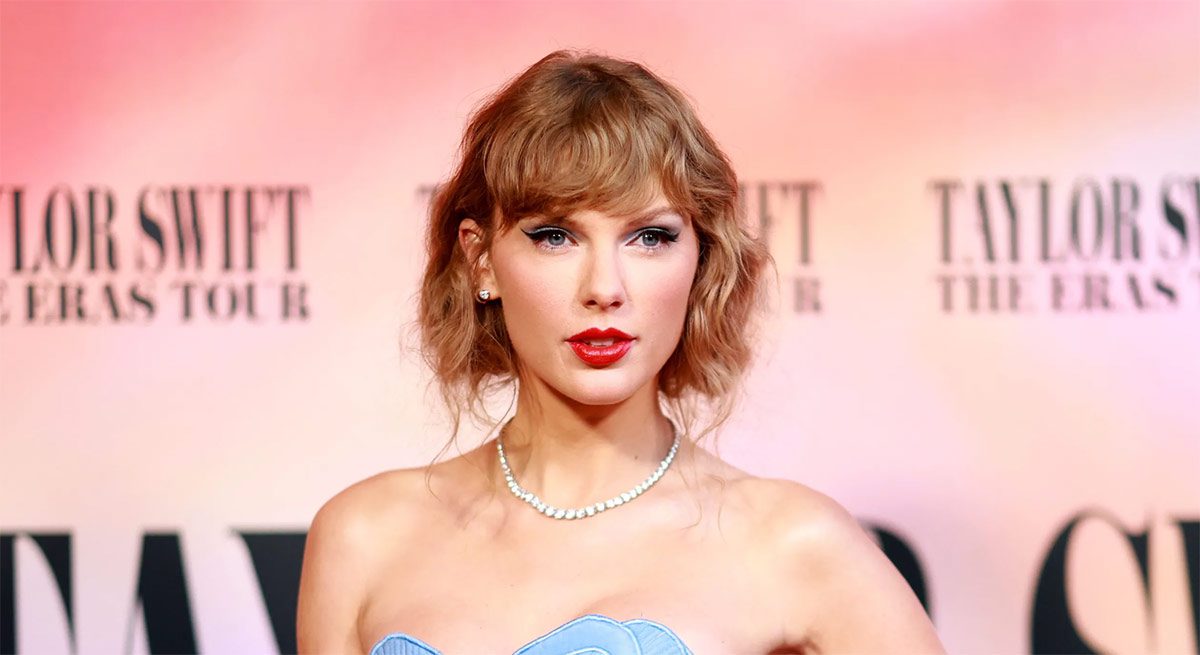
Taylor Swift’s journey in music has been nothing but extraordinary, phenomenal, even. From a young country music singer-songwriter to a global pop culture icon, she has consistently pushed the boundaries of what it means to be a successful artist. With a $1.6 billion real-time net worth as of this writing, her fortune is built not only on her musical talent but also from her savvy business acumen and deep connection with her fans.
Taylor Swift’s Rise to Stardom
First making a name in the world of country music, Taylor Swift began her musical journey as a teenage prodigy. She signed with Big Machine Records at the age of 14, and by 2006, she had released her self-titled album.
This gained her much-needed attention, thanks to the incredible mix of catchy melodies, heartfelt lyrics, and a distinct country-pop sound. A few tracks (Tim McGraw and Teardrops on My Guitar) became instant hits and anthems for her young listeners. Swift’s amazing ability to capture the complexities of adolescence resonated loudly with fans and, with much authenticity, built her a loyal following.
The release of her 2014 album, 1989, showcased Swift’s exploration of a broader musical territory. Her transition from country to pop was met with critical and commercial success, paving the way for a larger global audience and expanding her reach beyond country music. This album cemented her position as a mainstream pop icon.
Since then, Swift has garnered recognition, including 12 Grammy Awards, while solidifying her status as a cultural icon.
The Business of Taylor Swift
Another significant component of Taylor Swift’s success comes from her keen business acumen. Early in her career, she made one of her most strategic moves: securing the ownership of her songwriting rights. Her deal with Big Machine Records resulted in the label owning the rights to her first six albums.
To gain control over her creative work, Swift rerecorded and rereleased her music, calling them Taylor’s Versions. This was met with immense commercial success while raising awareness about the challenges artists face in the music industry. This positioned her as a voice for change and a powerful advocate for fellow musicians.
The business savvy didn’t end with Taylor Swift’s music. Endorsements, investments, and partnerships also added to her wealth. Then there’s the merchandising empire, which is a huge part of Taylor Swift’s financial success. Swifties, as her fans call themselves, are fiercely loyal and would buy exclusive merch tied to Swift’s albums, tours, and personal branding.
The Financial Impact of “The Eras Tour”
And the buck doesn’t stop there. The Eras Tour has been a game-changer for Taylor Swift. It set new records and reshaped the live music industry. It became one of the highest-grossing in history, with some estimates at over a billion dollars in revenue. While it showcases her universal appeal, it also boosted economies in cities around the world.
Each of Swift’s performances became a celebration of her musical journey. They were replete with stunning stage designs, elaborate setlists, and personal storytelling, creating an immersive experience that gave the show a once-in-a-lifetime feel.
The influx of Swifties impacted host cities economically. Local businesses such as hotels, restaurants, and transportation benefited greatly from the tour.
Taylor Swift: The Savvy Businesswoman
Carefully managing her brand and image led Taylor Swift to success beyond her music. She evolved with her audience but remained true to her values. Controlling her narrative, she has crafted a relatable yet aspirational persona that resonates well with millions.
Additionally, Swift has aligned her brand with various social causes, reinforcing her image as a musician and entrepreneur who uses her success to make a positive impact. She does this by using her platform to speak out on issues such as LGBTQ+ rights, women’s empowerment, political activism, and overall encouraging change.
The Road to a Billion
Taylor Swift’s road to billionaire status is a result of her diverse income streams. We now know her wealth comes from music royalties, specifically The Eras Tour, merchandise sales, and smart investments. She further strengthened her financial portfolio by investing in real estate, tech companies, and her own production company.
When you compare her to other artists who have reached billionaire status, such as Rihanna and Jay-Z, you’ll see that her success is distinguished by her complete control over her music and brand. While others entered other industries like fashion and beauty, Swift focused on her music, tours, and merchandise, creating a self-sustaining financial empire.
The Cultural Phenomenon
There is no doubt, Taylor Swift is a cultural phenomenon, and this is thanks to her enduring connection with her fanbase, the Swifties. She has built a solid relationship with them through genuine interactions, storytelling, and a sense of community. She has shown an openness in social media that, alongside her relatable lyrics, connected her with fans on a deeper and more personal level.
Taylor Swift has indeed shaped pop culture and the entertainment industry by setting trends, challenging norms, and advocating for causes she believes in. From fashion trends to how artists navigate their careers, Swift has made her impact. Most importantly, her authenticity has set her apart.
She has displayed the ability to evolve musically while maintaining her values, earning her the loyalty of her diverse following. Her lyrics are deeply personal, touching on various subjects like love, heartbreak, and self-discovery, echoing the sentiments of her listeners on a universal level.
Final Thoughts
From a country music star to a global icon, Taylor Swift has to thank her unparalleled talent, strategic thinking, and deep connection to her fans. Her savvy business moves, groundbreaking tours, and authenticity have helped her amass a fortune while transforming her into a cultural phenomenon.
Entertainment
On The Count Of Three Review
A past-due calling card for actor-director Jerrod Carmichael
Published
4 weeks agoon
June 13, 2025
WARNING: This review, and this film, contain discussions of suicide.
A Dark Premise, A Wobbly Execution
“On the Count of Three” opens with a bold premise: two childhood friends make a suicide pact and spend their last day on Earth tying up loose ends. It’s certainly fresh, but what makes “On the Count of Three” feel oddly stale despite its originality?
It’s not that we’ve seen too many comedies about suicide before. It does, I suppose, bear some resemblance to other race-against-the-clock (Good Time) or apocalyptic (Seeking a Friend for the End of the World) comedies. Maybe it doesn’t commit to darkness as much as these comedies; there’s certainly a humanist core deep down here.
But I think we all sort of know why this movie can’t fully work in 2022: it’s a movie Jerrod Carmichael made in 2020. The director and star has seen a long-overdue rise to stardom in these past months after a series of false starts. He’d already had a breakout role in a hit comedy, a sitcom starring vehicle, a special directed by Spike Lee, and a recurring feature on 2019’s biggest album.
Last month, the stars finally aligned. He came out as gay, dropped a smash-hit comedy special, and hosted SNL all in the span of a week. It’s no surprise that Annapurna Pictures quickly moved to release On the Count of Three, which they picked up at Sundance in January 2021.
Here’s the rub: On the Count of Three lacks the self-assuredness of Carmichael’s recent rise. It doesn’t feel like the film, or the version of this film, that he would’ve made today. His performance as both actor and director is good, but held to a certain restriction.
Two Leads, One Day, A Lot of Pain
Carmichael plays Val, a down-on-his-luck laborer who ventures to commit suicide with the help of his recently-hospitalized friend Kevin (Christopher Abbott).
While there’s a certain comical bleakness to Val’s life—he essentially shovels dirt for a living—there’s an interesting idea of suicidal ideation here. Val’s thoughts of killing himself don’t come from stagnation or trauma, but from dissatisfaction with achievement. He makes his first attempt right after getting a promotion, and we later learn that he had planned to propose to his now-pregnant partner, Natasha (Tiffany Haddish).
As director, Carmichael wisely avoids eating up the film and splits lead duties with Abbott. If anything, Abbott gets the real star showcase here, again proving his dynamic magnetism after a series of weirdo indie turns like Vox Lux, Possessor, and Black Bear.
The Black Comedy Balancing Act
Still, there’s a classic comedic duo chemistry here. Carmichael is the rock around which Abbott orbits. The setup also gives them plenty of opportunities to subvert that dynamic. When Val’s confrontation with his father (J.B. Smoove) gets heated, Kevin has to be the one to pull him back. But, when they come to blows, Kevin’s the one with the tire iron.
Black comedy is always a tricky balancing act. Penn and Teller Get Killed is notorious for going all-in on nihilism and failing to connect. I think this film mostly succeeds, but its uncertainty with its own dark philosophy is, again, reflective of a more self-conscious point in Carmichael’s career.
Bleak, But Also Soft Around the Edges
In Kevin’s first scene, he delivers a monologue about how doctors have been trying to fix him since he was eight years old, and if his life was worth saving, they’d have done it by now. Much of the film follows Kevin’s quest to kill a childhood doctor who molested him (played by Henry Winkler). Ultimately, it’s Val who pulls the trigger, but only after he decides to choose life. His decision to choose life only comes after a guilt trip from Natasha, who lays out how he’ll still be guilty in death if he abdicates his responsibility as a father.
All of which is to say, this is in many ways a philosophically bleak movie. But at the same time, the humanism of the direction kind of betrays that philosophy. There are a lot of monsters around the central players here, but the cashiers, receptionists, and other random side characters they meet along the way are given a stark innocence.
That Ending: On The Count of Three
I’m not sure how I feel about any of this. Is it too bleak? Not bleak enough? Or just not made with enough confidence to come out strongly in either direction? Whatever the case, I think this movie hums along perfectly fine. Until the last minute.
For the most part, On the Count of Three is very insular. We’re never not following Val and Kevin, and it takes place over the course of a day that they spend almost completely alone.
The final shot, which I won’t give away, finally pulls us out. We recognize that Val’s story is one of a million stories, all different, all wrestling with life and death, and all ending in the same rotten place. It’s certainly the most striking ending I’ve seen this year, and it made me think twice about the film overall.
Final Thoughts
When I’m reflecting on this year, I don’t think On the Count of Three will end up one of my favorites. Seeing how far Carmichael has come, this film’s steady, dry lob isn’t the catapult that Annapurna hoped it would be. Still, it’s a perfectly solid film. It’s absolutely worth seeing for its final shot alone. B
On the Count of Three is now playing at Landmark’s Ritz Five and available on digital.

What Is Tiktok Pink Sauce? The Viral Condiment, Explained

Did You Drop Your Smartphone in The Ocean? Here’s How to Retrieve It

Gift Guide: 25 Best Gifts for Women for All Occasions

History of the NBA: The Success Behind the Big League

Demio SaaS 2025 Review: Features, Pricing, Pros & Cons

Top 12 Uses for The Metaverse That Will Change Your Life

Top 10 Best Places to Buy a Mid Century Modern Office Chair

Top 10 Best Places to Buy a Mid Century Modern Office Chair

History of the NBA: The Success Behind the Big League

8 Best Equipment for YouTube Every Content Creator Needs

Demio SaaS 2025 Review: Features, Pricing, Pros & Cons

Did You Drop Your Smartphone in The Ocean? Here’s How to Retrieve It

Top 10 Small Business Organization Tools for 2025

Top 12 Uses for The Metaverse That Will Change Your Life
Trending
- Entertainment1 day ago
History of the NBA: The Success Behind the Big League
- Reviews2 days ago
Demio SaaS 2025 Review: Features, Pricing, Pros & Cons
- Lifestyle17 hours ago
Did You Drop Your Smartphone in The Ocean? Here’s How to Retrieve It
- Lifestyle1 day ago
Gift Guide: 25 Best Gifts for Women for All Occasions
- Top Stories17 hours ago
What Is Tiktok Pink Sauce? The Viral Condiment, Explained





